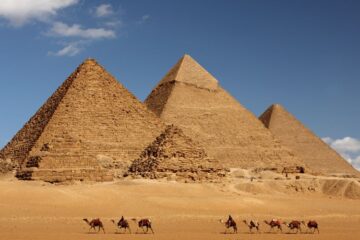In the rapidly evolving world of drone technology, accuracy and reliability are paramount, especially for tasks involving aerial surveying and mapping. To achieve high precision in the data collected by drones, meticulous calibration techniques are essential. This blog will explore the key calibration techniques used to optimize drone performance and ensure that your aerial surveys yield accurate and reliable results.
Why Calibration Matters
Calibration is the process of adjusting and fine-tuning the drone’s sensors and systems to ensure that the data collected is accurate and reflective of real-world conditions. Without proper calibration, the data may be skewed, leading to errors in mapping, measurement, and analysis. Proper calibration helps in minimizing these errors, enhancing the quality of the data, and ensuring that your drone performs optimally in various environmental conditions.
1. GPS Calibration
Overview: The GPS system is crucial for drones as it helps in determining the precise location and altitude of the drone. GPS calibration involves adjusting the drone’s GPS settings to ensure accurate positioning.
Techniques:
- Satellite Signal Acquisition: Ensure the drone receives strong signals from multiple satellites by calibrating it in open areas free from obstructions.
- Manual Adjustment: Sometimes, GPS coordinates may need manual adjustments based on known reference points or geodetic surveys.
2. IMU Calibration
Overview: The Inertial Measurement Unit (IMU) consists of accelerometers and gyroscopes that measure the drone’s acceleration and angular velocity. IMU calibration ensures that these measurements are accurate and reliable.
Techniques:
- Leveling and Positioning: Calibrate the IMU by placing the drone on a flat, stable surface to ensure that it is properly aligned.
- Software Calibration: Use the drone’s software or mobile app to run an IMU calibration routine, which often involves rotating the drone in specific patterns.
3. Camera Calibration
Overview: The camera is essential for capturing high-resolution images and videos. Proper calibration is necessary to ensure that the images are sharp and correctly aligned with the geographic coordinates.
Techniques:
- Lens Distortion Correction: Use calibration patterns (like checkerboards) to correct lens distortions and ensure accurate image capture.
- Camera Alignment: Ensure that the camera is properly aligned with the drone’s axis, often using built-in calibration tools or software.
4. Compass Calibration
Overview: The compass helps the drone maintain its orientation and direction. Calibration ensures that the compass readings are accurate and consistent.
Techniques:
- Compass Dance: Perform a “compass dance” by rotating the drone in all directions, usually in an open area, to recalibrate the compass.
- Magnetic Interference Check: Ensure there are no magnetic interferences from nearby objects or electronics that could affect compass readings.
5. Barometer Calibration
Overview: The barometer measures altitude based on air pressure. Accurate barometer calibration is essential for precise altitude measurements during flights.
Techniques:
- Altitude Check: Calibrate the barometer by comparing its readings with known altitude reference points.
- Environmental Adjustment: Ensure that the calibration is performed under stable weather conditions to avoid atmospheric pressure variations.
6. Battery Calibration
Overview: Accurate battery monitoring is crucial for safe drone operations. Calibration helps in providing accurate readings of battery life and health.
Techniques:
- Full Charge and Discharge: Perform a full charge and discharge cycle to recalibrate the battery’s internal sensor.
- Calibration Tools: Use the drone’s calibration tools or software to recalibrate the battery readings.
Best Practices for Calibration
- Regular Calibration: Perform calibration regularly, especially before important flights or surveys, to ensure consistent accuracy.
- Environmental Awareness: Be aware of environmental factors such as weather, temperature, and magnetic fields that can affect calibration.
- Follow Manufacturer Guidelines: Always adhere to the calibration instructions provided by the drone manufacturer for optimal results.
- Use Calibration Tools: Utilize available software and tools provided by the drone manufacturer for precise calibration routines.
Conclusion
Proper drone calibration is a critical step in ensuring that your aerial surveys and data collection efforts are accurate and reliable. By following the appropriate calibration techniques for GPS, IMU, camera, compass, barometer, and battery systems, you can enhance the performance of your drone and achieve high-quality results. Whether you’re surveying a construction site, mapping agricultural fields, or conducting environmental monitoring, accurate calibration will contribute significantly to the success of your drone operations.


0 Comments